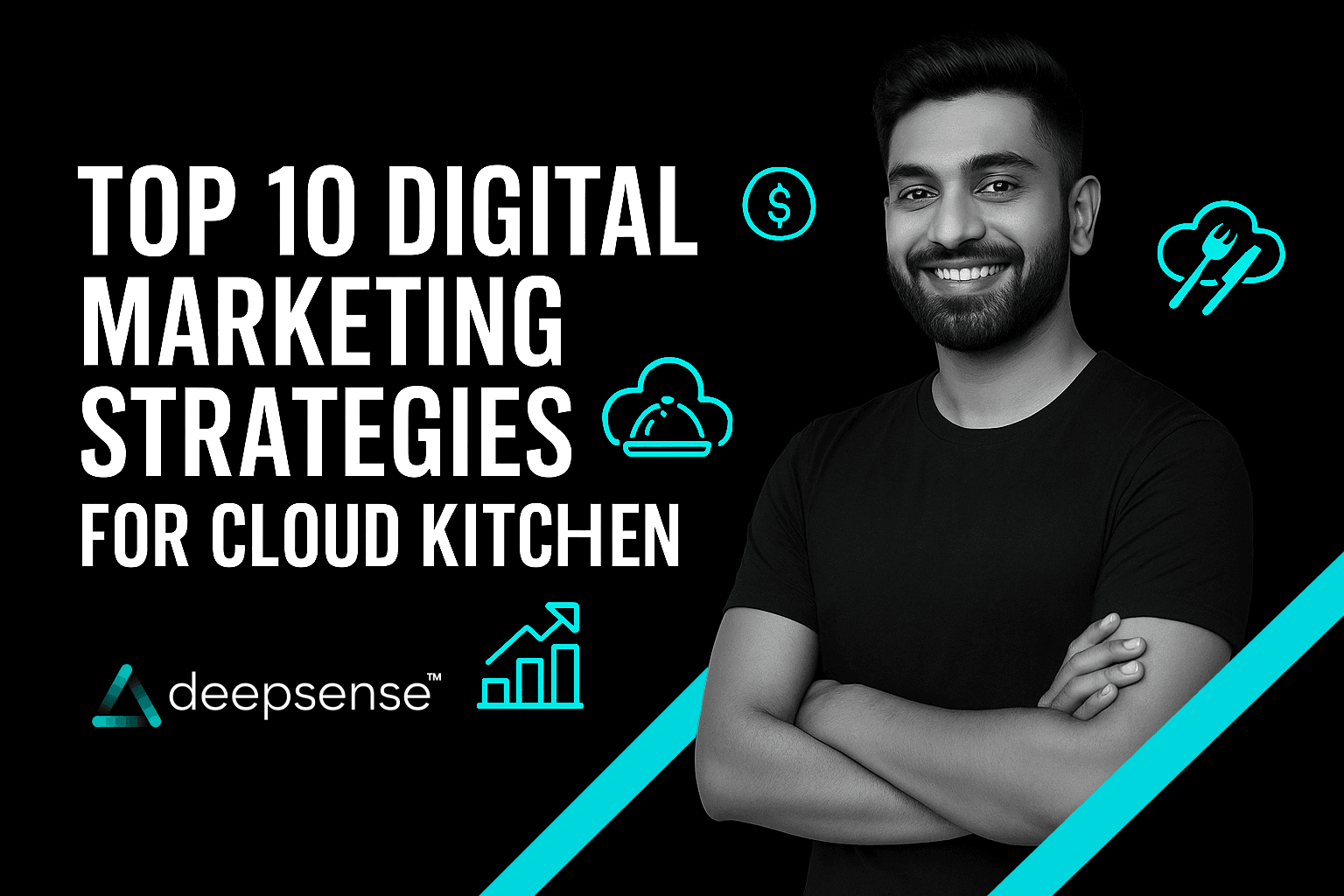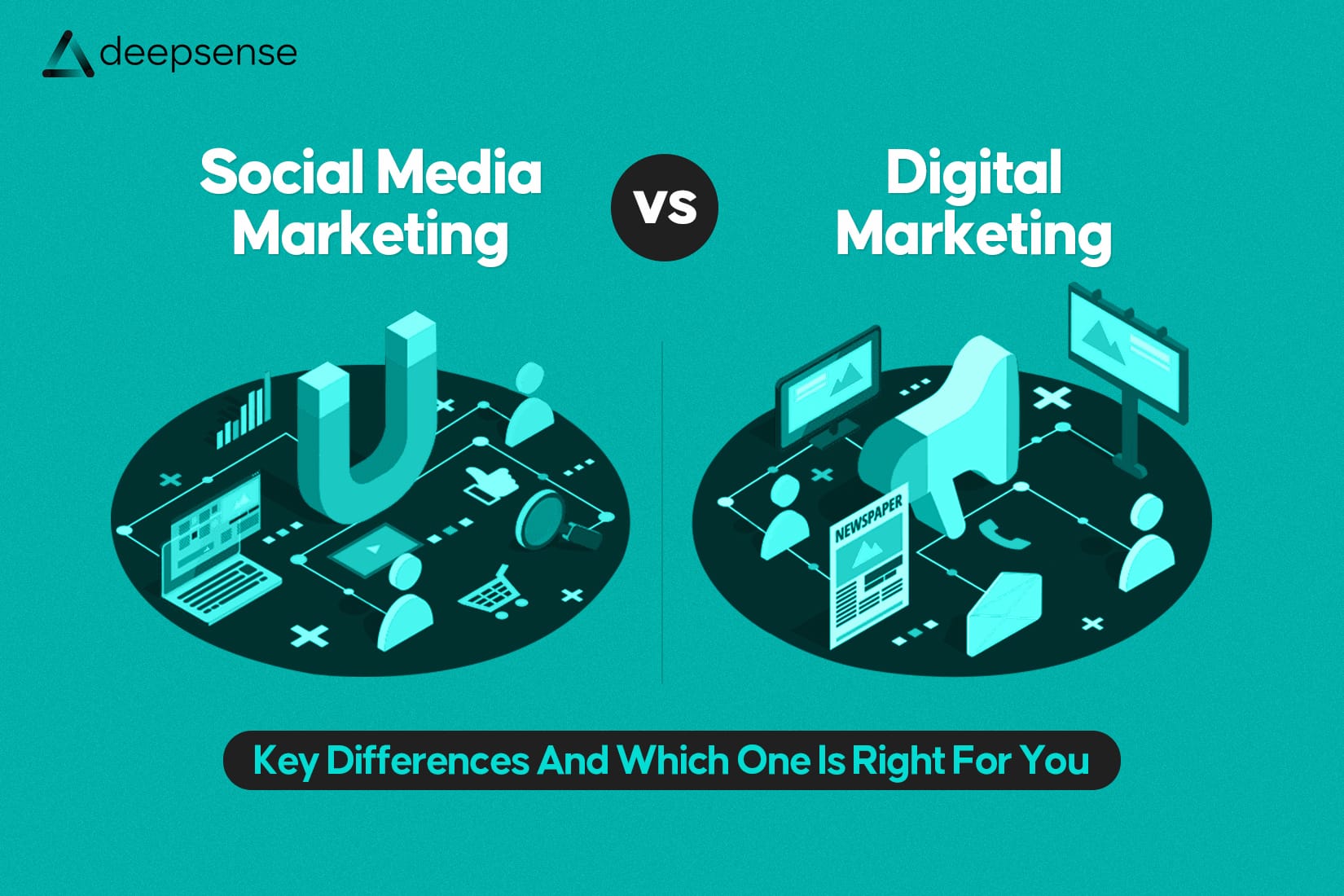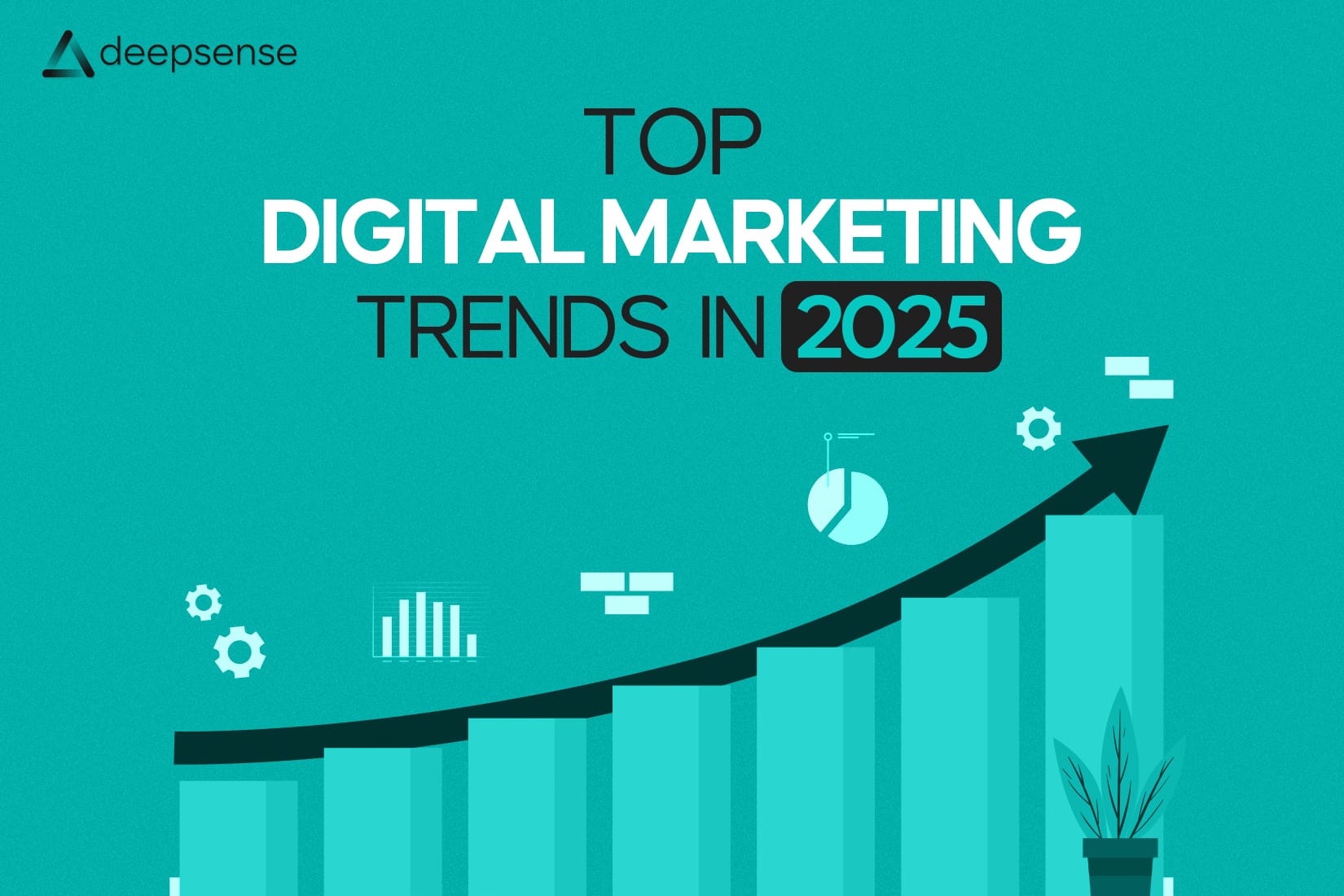Introduction: Why Digital is Everything in the Cloud Kitchen Game
Imagine this: You’ve invested in a brilliant cloud kitchen concept, great chefs, mouth-watering dishes, lightning-fast delivery. But there’s a catch: no one knows you exist. No foot traffic. No physical visibility. Only the digital world to make your mark.
In the fast-paced food delivery market, your digital presence is your brand.
Stat check: According to RedSeer, India’s cloud kitchen market is poised to hit $3 billion by 2026, driven by urban convenience and app-based ordering. But with tens of thousands of kitchens popping up, the competition is cut-throat.
To stand out, cloud kitchens need more than just tasty food. They need a robust digital marketing engine that fuels awareness, engagement, and repeat orders.
Let’s dig into 10 strategies that real cloud kitchens have used to go from invisible to irresistible.
1. Hyper-Local SEO: Be Found Before You’re Craved
Real Experience:
A Mumbai-based kitchen, “Tandoori Tikka House,” optimized their Google Business Profile and started ranking for terms like “biryani delivery in Bandra.” Result? A 48% surge in organic orders in 30 days.
How to Do It:
- Set up and optimize your Google My Business page
- Use hyper-local keywords like “best momo delivery in Koramangala”
- Regularly post photos and menu updates
- Encourage and respond to reviews
Why It Works:
Food cravings are spontaneous. Being top-of-mind (and top-of-search) means winning the click before your competitor does.
2. Platform-Specific Ads: Use Swiggy, Zomato & Meta Like a Billboard
Stat Check:
60% of orders for Indian cloud kitchens originate from Swiggy and Zomato (Inc42, 2024).
Smart Strategy:
- Run Swiggy/Zomato ads during lunch/dinner peaks
- Use Instagram stories to run mouthwatering video ads with swipe-up coupons
- Facebook carousel ads showcasing different meals or combos
Case Study:
“Wrap Bros,” a Bangalore wrap chain, spent ₹15,000 on Swiggy ads and made ₹48,000 in 7 days. That’s a 3.2x return.
3. Micro-Influencer Partnerships
Why Micro Wins:
Micro-influencers (1K–10K followers) have 7x the engagement of mega-influencers and are cost-effective.
Real Results:
“Street Bowl” in Delhi partnered with 10 food influencers under 10K followers. Each shared authentic “unboxing” videos. Result: 200+ orders in one week on a shoestring budget.
Step-by-Step:
- Find local foodies with engaged audiences
- Offer free meals or deals
- Encourage candid reviews with coupon codes
4. Menu Engineering for Online Attention
The Psychology:
With an average 2-minute decision time (Zomato 2023 data), your menu must convince quickly.
Menu Hacks:
- Use vivid, crave-worthy names (e.g., “Sizzling Tandoori Paneer Bowl”)
- Write sensory-driven descriptions: “Smoky, buttery paneer in a saffron rice base”
- Highlight bestsellers & add icons for spicy, vegan, etc.
Real Change:
One brand increased conversions by 31% simply by redesigning their digital menu layout.
5. WhatsApp Marketing for Retention
Use Case:
“Masala Bowls” in Chennai used WhatsApp Business API to confirm orders, ask for feedback, and send discount messages. Result? A 37% increase in repeat orders in just 45 days.
Framework:
- Use auto-messages for feedback post-delivery
- Share time-limited coupon codes
- Send weekend reminders to loyal customers
Tools:
Use WhatsApp API tools like WATI or Zoko for automation.
6. Loyalty Programs That Work
Data Speaks:
52% of consumers join loyalty programs if they get instant rewards (Yotpo 2023).
Build Trust:
- Earn points for each order (e.g., 10 points per ₹100)
- Redeem points for free meals or add-ons
- Incentivize referrals with bonus points
Best Practice:
Avoid overcomplicating. Keep the program simple, and communicate it through every channel: in-box flyers, WhatsApp, and Instagram.
7. Seasonal & Festive Campaigns
Emotional Connect:
Food is deeply tied to celebration. Festive drops create buzz, urgency, and brand recall.
Case Study:
“Bombay Bites” ran a Diwali-themed meal box with a countdown campaign on Instagram and WhatsApp. Orders tripled within 4 days.
Execution Tips:
- Launch limited-time festive meals
- Use countdown stickers & polls on Instagram
- Send early-bird offers via WhatsApp
8. Build a Feedback Loop
Customer Voices = Digital Gold:
Your reviews reveal hidden problems and growth hacks.
Methods:
- Use Zomato/Swiggy review dashboards
- Run quick Typeform polls
- Set up WhatsApp surveys post-delivery
Common Fixes:
- Complaints about spice? Add spice-level selectors.
- Packaging issues? Upgrade your boxes and highlight that improvement online.
9. Use Analytics for Every Decision
Why It Matters:
Brands using analytics are 23x more likely to acquire customers (Deloitte).
What to Track:
- Google Analytics (for direct order website traffic)
- Zomato/Swiggy (bounce rate, drop-off times, bestseller analysis)
- Meta Ads (CTR, cost per lead/order)
Outcome:
Identify top-performing channels and double down. Pause underperforming ads fast.
10. Build Your Own Ordering Ecosystem
The Problem:
Aggregator platforms take a 20–35% commission per order.
The Solution:
Create your own site/app for direct ordering.
Real Win:
“RiceRush” built their own Shopify store with WhatsApp integration. In 3 months, they moved 20% of regular orders off Swiggy/Zomato, increasing profit margins.
Tools:
- Shopify or Wix
- Razorpay for payments
- WhatsApp API for order confirmation
Promote it via:
- Packaging inserts with QR codes
- Email & WhatsApp to existing customers
Human Insight: Think Like a Restaurant Host, Not Just a Marketer
Even without a physical location, your customer experience can be warm and memorable.
- Your Instagram page is your ambience
- Your order confirmation message is your welcome drink
- Your packaging is your decor
- Your WhatsApp follow-up is your friendly server
Make each touchpoint count.
Conclusion: Own Your Niche with Smart, Simple Digital Moves
If you’re running a cloud kitchen, you’re not in the food business, you’re in the digital food business. Your marketing is the only way customers see, know, and remember you.
Let’s recap the 10 key strategies:
- Hyper-local SEO
- Platform-specific ads
- Micro-influencer collabs
- Menu engineering
- WhatsApp retention
- Loyalty programs
- Festive campaigns
- Feedback loop
- Analytics-driven decisions
- Direct ordering system
Final Word: Start Where You Are, Scale as You Go
Don’t try to do all 10 at once. Pick 2–3 that fit your current bandwidth. Track results. Then expand.
Want help building your cloud kitchen marketing funnel? Drop a message, and we’ll cook up a strategy together.
FAQs
1. How to market for a cloud kitchen?
Marketing a cloud kitchen revolves around creating visibility, trust, and crave-worthiness online—since there’s no physical footfall.
Key strategies include:
- Local SEO (Google My Business, Zomato/Swiggy profile optimization)
- Instagram-first content (high-quality food photos, behind-the-scenes reels)
- Platform ads (Swiggy, Zomato, Meta ads targeted by radius)
- Packaging as branding (QR codes, coupon inserts, loyalty promos)
- WhatsApp + SMS retargeting for repeat orders
Pro tip: Encourage reviews and ratings—they build social proof and boost platform rankings.
2. What are the top 7 types of digital marketing strategies?
Here are the 7 most effective digital marketing strategies that can be used across industries, especially for cloud kitchens:
- Search Engine Optimization (SEO) – Helps you appear in local food-related searches.
- Social Media Marketing (SMM) – Platforms like Instagram, Facebook, and YouTube to engage and attract.
- Influencer Marketing – Collaborate with food bloggers to create buzz and trust.
- Pay-Per-Click Advertising (PPC) – Targeted ads on Swiggy, Zomato, Google, Instagram.
- Email & WhatsApp Marketing – Retarget customers with deals, updates, and loyalty programs.
- Content Marketing – Food blogs, recipe videos, chef interviews to build brand personality.
- Affiliate & Referral Programs – Let happy customers refer and earn rewards.
3. What is a digital marketing strategy in the hospitality industry?
In the hospitality industry, digital marketing focuses on experience-building, discoverability, and trust. This applies to hotels, restaurants, and cloud kitchens.
A successful strategy includes:
- A visually appealing website or platform listing
- Strong presence on Google, Zomato, TripAdvisor
- Guest testimonials, ratings, and influencer partnerships
- Personalized email/WhatsApp journeys for guests
- Video storytelling (behind-the-scenes, chef features, kitchen hygiene)
In essence: “Sell the feeling of your service, not just the food or room.”
4. What is the best strategy for digital marketing?
There’s no one-size-fits-all, but the best strategy is a customer-journey-focused funnel that looks like this:
- Attract: via SEO, social content, platform ads
- Engage: with videos, influencer reviews, interactive content
- Convert: with irresistible offers, quick ordering, easy UX
- Retain: through WhatsApp/SMS reminders, loyalty rewards, feedback requests
The golden rule? Know your audience deeply, and show up where they are—with relevance and consistency.
5. Is a cloud kitchen B2B or B2C?
Cloud kitchens are primarily B2C – they directly serve individual consumers via delivery platforms like Zomato, Swiggy, Uber Eats, etc.
However, some cloud kitchens may also have a B2B extension, such as:
- Licensing food brands to other kitchens
- Bulk meal prep for corporate orders or event caterers
But for 95% of the time, cloud kitchens operate in a B2C model.
6. How to promote a cloud kitchen on Zomato?
To promote on Zomato effectively:
Optimize your listing:
- Write a catchy description
- Add crisp, mouth-watering photos
- Use keywords for local SEO (e.g., “Best Butter Chicken in Velachery”)
Use Zomato Ads:
- Run Sponsored Listings during peak hours
- Use discount offers like “20% off on ₹300+ orders”
Encourage Reviews:
- Prompt happy customers to leave 4–5 star reviews
- Respond to reviews (positive & negative) professionally
Utilize Zomato Loyalty Programs:
- Sign up for Zomato Gold or other loyalty features to encourage repeat orders
Track & Iterate:
- Use Zomato’s restaurant dashboard to monitor order trends and tweak your ads, menu, or timing accordingly.











